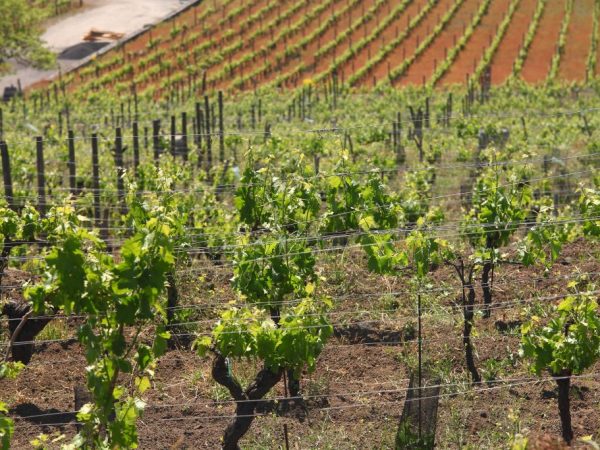For what reasons grapes cry in spring
Leakage of juice from grape slices at the onset of spring is a natural process. However, sometimes grapes cry in spring and because of problems in the development of the plant. In this case, the release of juice is excessive.

For what reasons grapes cry in spring
Sap extraction rates
Pasok is released in spring, its duration is on average from 10 to 30 days. With a slight cold snap, it is possible that the juice flows out, but as soon as the temperature rises, it starts to flow out again. Usually, the crying of grapes stops after the formation of shoots about 10 cm in size.If the cessation of secretions occurred earlier, this indicates a deficiency of trace elements in the soil, as well as bushes infected with chlorosis.
The duration of saping depends on the grape variety, season and soil temperature. For the following varieties, the temperature ranges are given, at which the sap can begin to flow:
- at 10.5 ° C for European varieties - Vitis riparia;
- at 14 ° C for European varieties - Vitis berlandieri;
- at 4-4.5 ° C for European-Amur hybrids;
- at 4 ° С for Amur varieties;
- at 8 ° С for American varieties - Labrusca, Riparia;
- at 6 ° C for Vitis vinifera x Labrusca;
- at 10 ° C for Vitis vinifera.
Reasons for the appearance of grape tears
During the period of sap extraction, the bush loses trace elements, which threatens the shoots with death due to lack of feeding.
Up to 2 liters of juice is released per day. This happens if crying is prolonged, or if moisture gets on the kidneys. As a result, they can turn sour. The increased production of juice affects the yield - these bushes produce fewer fruits and their taste is less intense.
The following reasons lead to intensive crying of grapes in early spring:
- Using a pruner or other non-pruning tool. For cutting, a well-sharpened knife or a specialized saw is used, the cuts are processed.
- Pruning is carried out in early spring or at the very end of winter. The wrong timing also leads to the appearance of crying on the branches. At the first warmth, juices move along the vine and shoots.
- Too much pruning of the vine. This can provoke not only strong crying, but also the death of the bush.
- During pruning, only dry branches should be removed, and the cut diameter should be as small as possible. If you prune living branches or do it inaccurately, tears are to be expected as well.
- Soil and how abundantly groundwater lives. Abundant watering provokes an overdose, which entails the appearance of tears.
Rules for pruning grapes

Grapes require pruning
When pruning, take into account the growing area. The northern regions have an unstable temperature regime in spring, pruning will only hurt. In this case, it is better to refuse spring pruning. For the southern territories, it is held at the end of February or in March.
With the onset of autumn, the next pruning occurs. It is carried out in front of the winter shelter of the bushes, when the leaves have fallen off and the first frosts have come.The leaf fall process can be accelerated for cultivars that ripen later, and without waiting too long, using commercially available substances.
If for some reason the pruning of branches did not occur in the fall, this can be done in February, until the sap flow has begun, and so that there is time to tighten the cuts. There are times when a cut bush at the end of winter, with the onset of spring, can intensively release juice even under cover. This is due to the fact that wounds left before or during the growing season can remain open for a long time. Sap can flow through such wounds, the bush can become infected. In such cases, in the northern regions, pruning is carried out after the growth of shoots up to 10 cm in size, when the natural sap has already ended.
There are times when the vine turns black due to getting wet. This happens when the sap does not drip directly to the ground, but flows down the vine. At the onset of spring, each bush is inspected. The weeping vine is tied horizontally so that the juice falls directly to the ground. To avoid such situations, it is recommended to cut from the upper eye with a slope to the opposite side.
Slicing and sap reduction
If the grapes cry in the spring, use the methods of processing the vines during the allocation of the sap:
- cover the cut with paint;
- cover the cut with wax;
- use magnesium chlorate to spray the bush;
- use special products that mimic the bark (for example, Etisso Artificial Bark balm);
- apply a tourniquet of soft aluminum wire.
There are other methods: the use of plasticine, moxibustion of shoots, PVA glue with cement. If grapes cry in early spring, you can save the vine by all available methods to prevent the death of the plant.
Conclusion
The best way to deal with crying is prevention and timely pruning of dry branches. If it is not possible to prevent the problem, use the care recommendations that help to grow delicious grapes.


